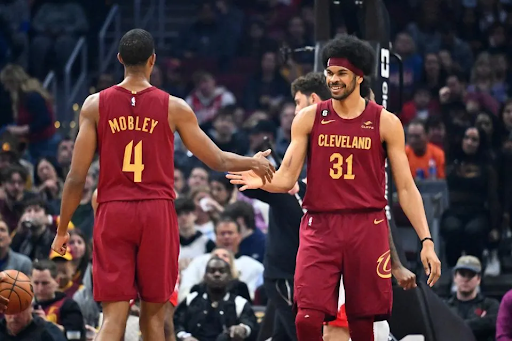Table of Contents
“Time is a flat circle” in the NBA (and in life, for that matter). Anything that happens has already happened and will continue to happen until the end of time.
Trends in basketball are no different. They come and go—cycling in and out of fashion. And one of the most fascinating revivals in the 2024-25 NBA season has been the return of the double big lineup.
A Brief History of the Double Big Lineup
For much of the NBA’s history, teams fielded two big men in their lineups because the game naturally favored size. More height meant more dominance in the paint, and teams leaned into that advantage.
However, the evolution of the game shifted priorities. As the “Pace and Space” era took over, skill began to overshadow size. Shooters and ball-handlers became more valuable, and smaller lineups that could stretch the floor and run in transition became the norm.
This shift culminated in lineups like the Golden State Warriors’ iconic “Death Lineup,” which highlighted the advantages of speed, spacing, and versatility over traditional size.
How Bigs Made a Comeback
The trend became so extreme that some teams omitted true centers altogether. Why dedicate one of five crucial on-court spots to a player who couldn’t shoot or defend in space?
To survive in this changing landscape, the next generation of big men adapted. They embraced skill development—adding shooting, passing, ball-handling, and court vision to their already imposing physical toolkits.
“Yes, pure size is better than pure skill. But do you know what trumps both of those things? Size and skill.”
Today, the NBA features a new wave of versatile 7-footers—players like Nikola Jokic, Alperen Sengun, and Evan Mobley—who can initiate offense, operate in the short roll, or even serve as the primary playmaker. These hybrid bigs have brought a resurgence of respect to the position and, with them, the return of the double big lineup.
The Numbers Don’t Lie
It’s no coincidence that the top eight double big combinations in the NBA belong to teams currently sitting in the top eight of their respective conferences. Even more telling—six of those teams rank in the top ten in offensive rating.
In today’s game, the team that blends size and skill most effectively is often the one that comes out on top. And pairing two centers—once seen as archaic—is now a viable way to achieve that balance.
Why This Postseason Matters
The 2025 NBA Playoffs will serve as the ultimate testing ground for this resurgence. Several playoff teams have found success with the double big model, and all eyes will be on how these lineups fare under postseason pressure.
“You may have noticed from looking at these tandems that one or both of the bigs in the pairing is a below-average/non-shooter. This was the main cause for teams turning away from this formula in the first place.”
Indeed, shooting limitations once doomed these lineups. But teams have gotten creative. Rather than forcing two bigs to shoot threes, they’re leveraging other strategies: offensive rebounding, cutting, and interior passing. The Cleveland Cavaliers, for example, have mastered this approach.
Defensively, teams like the Houston Rockets are using more zone coverages to compensate for the reduced foot speed of their big men on the perimeter.
“So, in theory, teams can reap the benefits of these lineups without enduring the drawbacks.”
The Big Questions
Still, questions remain. Will these strategies hold up in the postseason? Will defenses find ways to neutralize the size advantage, exposing the lack of shooting? Can opposing offenses dissect zone defenses and force teams into more traditional coverages?
“To be honest, I’m not sure how any of this will unfold. But one thing is for certain, this postseason will play a huge role in the future of the double big lineup.”
Whatever the answers may be, one thing is clear: the 2025 NBA Playoffs will be a proving ground for the next evolution of the modern big man—and perhaps, a sign that what’s old in the NBA always finds a way to become new again.



